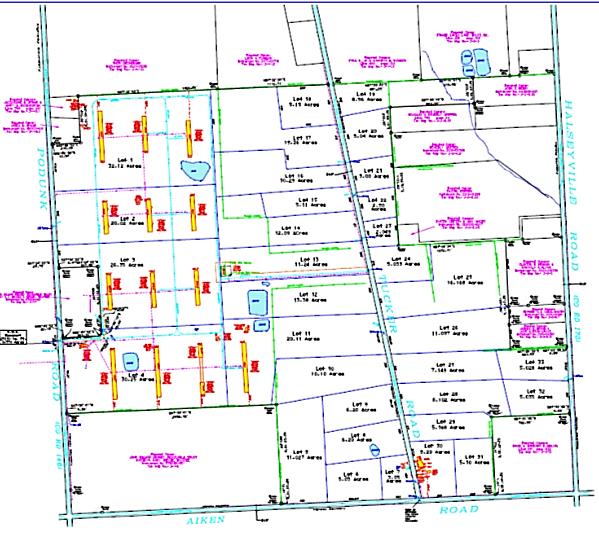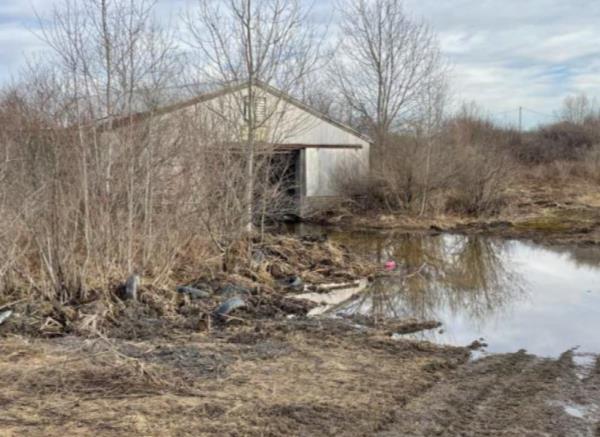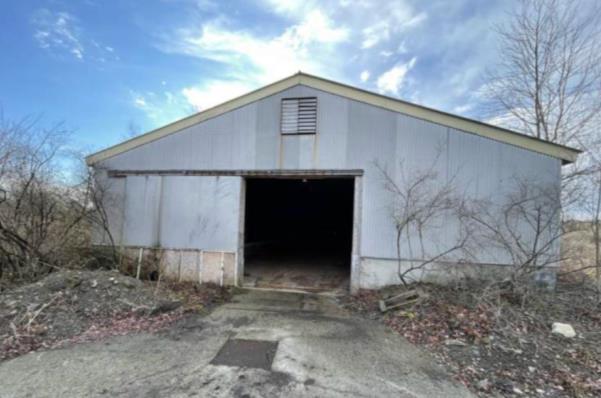[My own Councilperson Comments at the Public Hearing follow this story.]

by Robert Lynch; April 5, 2023
Despite universal resident criticism at a well-attended Public Hearing Wednesday, the Enfield Town Planning Board appears headed toward an early-May approval of the controversial, 33-lot Breezy Meadows Farm subdivision between Podunk and Halseyville Roads. Town planners edged ever closer to the subdivision’s approval Wednesday as they capped the 35-minute hearing with a two-hour, line-by-line review of the developer’s Environmental Assessment, members nearly always joining Board Chair Dan Walker’s conclusions that chopping up a 337-acre largely-abandoned farm would impose minimal environmental impact.
“I think we’re ready to do a negative determination,” Walker said at the meeting’s close, a signal that he—and likely also the full Board—will not call for New York Land & Lakes Development to undertake a more exhaustive Environmental Impact Statement. “Approval next month is possible,” Walker said.
More than 20 Enfield residents turned out in person or zoomed into the meeting’s online portal Wednesday. Only about eight persons spoke, but all were critical of the proposed redevelopment of the former J. William Kinney farm, which Land & Lakes would split into lots of varying sizes. Critics most often cited potential depletion of existing groundwater supplies and the removal of otherwise-usable tillable farmland.
“Most is a prime soil,” nearby Hayts Road sheep farmer Marguerite Wells said of the land. “There’s a very strong demand for farmland.”
Wells also predicted the project would place exhaustive strain on Tucker Road, an unpaved, little-used Town Road that bisects the development, but which as many as 24 new homes could soon front upon it. Wells estimated the paving could consume 19 per cent of the annual Enfield Town Budget, and that it would take 10-15 years for the new homes built along Tucker to pay back the cost.
Enfield Councilperson Robert Lynch (this writer), the only elected Enfield official to address the hearing, called for both a full-blown Environmental Impact Statement to address Breezy Meadows’ potential detriments, and also a professional hydrological study to determine water-well impact.
“I personally don’t think it’s an issue that requires an Environmental Impact Statement,” Walker said to the question of well-water adequacy, Walker resting his optimism upon existing, scattershot well-water data.
Lynch, by contrast, called many of Walker’s developer-friendly opinions “conclusory” and observed that critical public interest in the subdivision rivals that of the Black Oak Wind Farm controversy of a decade ago.
“We need an Environmental Impact Statement to determine if this is right for Enfield,” Lynch told the hearing.
Planning Board member Mike Carpenter, for one, expressed unease in relying on Walker’s repeated tendency to diminish Breezy Meadows’ potential impact. He especially questioned the Board Chair’s inability to cite a specific source to document that the development won’t “exceed safe and sustainable withdrawal capacity” of the local water supply, an assurance for which the Board’s environmental form requires an authoritative source.

“What will answer this?” Carpenter asked. “We could gloss over it. Is it right to gloss over it without citing a source?”
“There’s going to be an impact on agricultural resources,” Walker conceded, addressing another principal concern expressed by hearing critics, but a concern for which the Board Chair sought to downplay the development’s minimal impact.
“We are breaking up corn fields that could be farmed continuously,” the Board Chair recognized. “But they are not prime soils,” Walker said of the Kinney farm site, presently fallow.
With majority Planning Board sentiment largely on Walker’s side, expect the Board’s majority to green-light the Breezy Meadows subdivision at its May third meeting. Sale of building lots could start thereafter.
****
And now, what I told the April 5th Planning Board Public Hearing regarding Breezy Meadows:
“Robert Lynch, you know, I’m Councilperson, Town of Enfield; that’s why I waited ‘til the end.
“I live on Gray Road. This doesn’t really impact me personally. But it does impact the constituents of this town, as we’ve known tonight.

“Where do I start? I think for one thing, this is the biggest controversy that’s hit Enfield since the Black Oak Wind Farm. And I’ll tell ‘ya: We don’t have zoning, and we don’t need zoning to deal with this problem. But with Black Oak, we did an Environmental Impact Statement. And I think this needs an Environmental Impact Statement. The Environmental Assessment (the less- demanding environmental study that the developer prepared with Planning Board assistance) I think fails the test on a number of points.
“I look at Part 2. And Part 2 said regarding ground water, which is a central point that’s been discussed tonight:
“(Question 4-a): The proposed action may require water well supply wells or create additional demand on supplies from existing water supply wells. It’s checked ‘No; small impact may occur.’…
“(Question 4-c): The proposed action may allow or result in residential uses in areas without water and sewer services. It’s checked ‘No; small impact may occur.’ Of course, there have to be new wells if there are new houses, 33 of them.
“(Question 4-d): The proposed action may include or require waste water discharge to ground water. We hope not. But they say ‘No.’
“Many things in Part 2 are conclusory. They’re basically based on assertions, not fact. I think for one thing, regarding ground water, that the developer should pay for a full hydrological study to determine what the impact 33 new homes in this property would amount to in terms of demand on water resources not only on the site, but to adjacent properties on the site.
“I look at the water well information that was supplied with this application that was done. It’s a state survey of wells that are drilled and reported. One person tonight who resides at 293 Halseyville Road; she’s got a well that’s 180 feet deep. It only produces two gallons per minute. There’s another property at 118 Halseyville Road. 300 feet down goes that well. It produces two gallons per minute.
“If these 33 homes are put there, what’s going to happen? Our neighbors cannot run out of water. We don’t have public water. We’re not going to have public water in my lifetime; probably most of your lifetimes. We have to rely on wells. And as we said—one person said already—the water quality is not good and the water quantity is apt to diminish.
“Also, the effect on farmland: The farmland is of concern. The developer has said in its Part 1 report that it would diminish the available farmland, agricultural land, going down from 145 acres to 116 acres. If you take and put 33 tiny farms with lots of lawns and probably a lot of brush on this (tract), you’re probably going to take that acreage down from that 145 acres of agricultural land down to near zero….
“This is good farmland. As one person said tonight, it’s land that’s in demand. And we have a Comprehensive Plan that says we are supposed to maintain a rural quality. And we are not maintaining the rural quality by this subdivision. We need an Environmental Impact Statement as a first step to see if this is right for Enfield. Thank you.”
###

